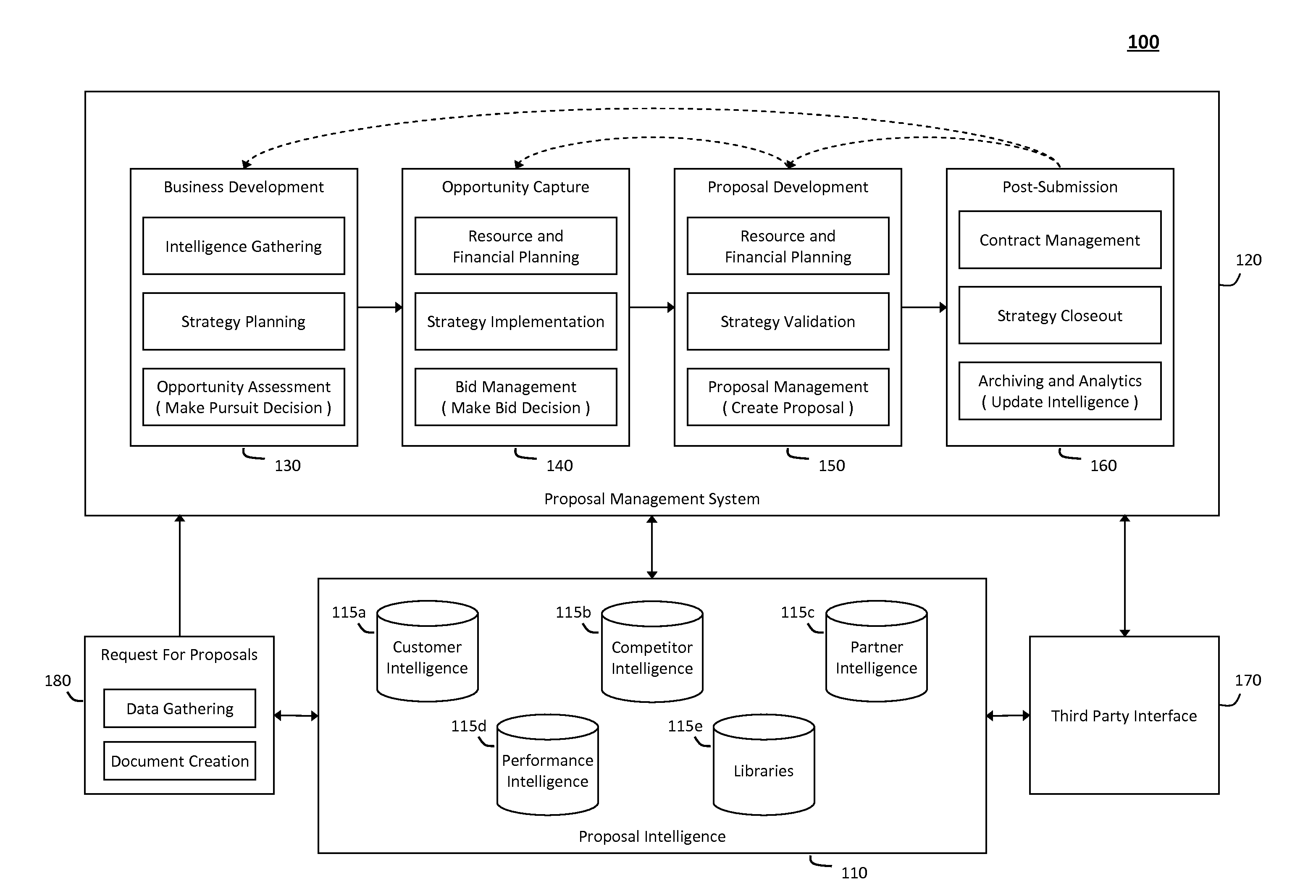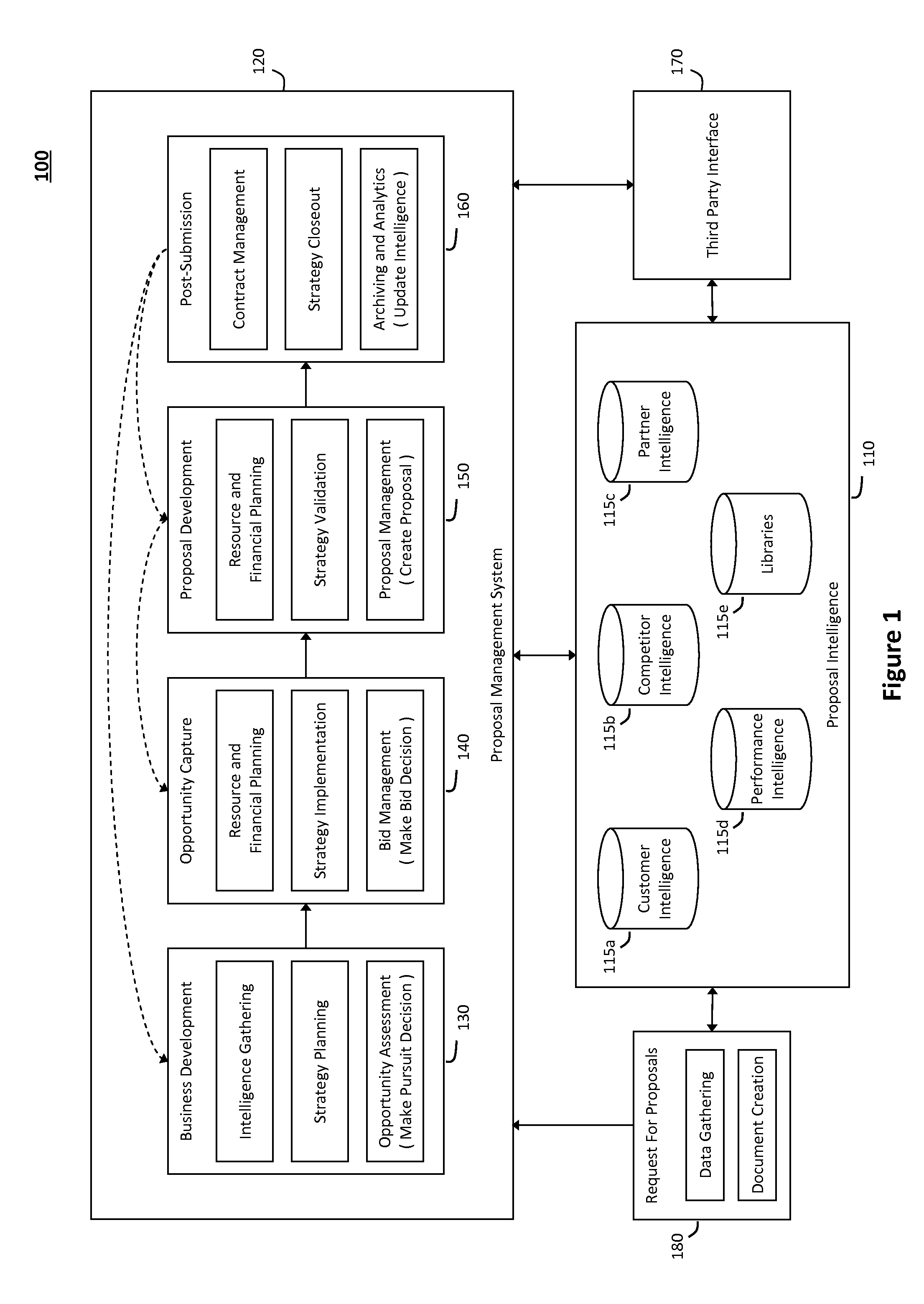System and method for managing a proposal lifecycle
a proposal lifecycle and proposal management technology, applied in the field of enterprise proposal management systems, can solve the problems of inability to integrate all organizational repositories and information sources, especially those that reside on individual machines, and difficulty in collaboration to make proposals across different human resource teams, so as to reduce the time that proposal authors spend, improve work and life quality, and reliably track the capture and proposal pipeline
- Summary
- Abstract
- Description
- Claims
- Application Information
AI Technical Summary
Benefits of technology
Problems solved by technology
Method used
Image
Examples
Embodiment Construction
[0026]According to one aspect of the invention, FIG. 1 illustrates an exemplary modular architecture 100 that may be used to manage and coordinate a proposal lifecycle and provide an integrated solution to manage various phases associated with a proposal lifecycle. In particular, the modular architecture 100 shown in FIG. 1 may integrate business information and proposal knowledge stored in various data sources to build proposal intelligence 110 that can be referenced or otherwise used to execute repeatable and effective strategies that relate to managing business development and proposal efforts within an enterprise. For example, the architecture 100 may integrate a proposal management system 120 with the proposal intelligence 110, wherein the proposal management system 120 may have various tools that can substantially reduce the time that proposal authors spend to search and retrieve content from past proposals (whether successful or unsuccessful), coordinate collaboration across ...
PUM
 Login to View More
Login to View More Abstract
Description
Claims
Application Information
 Login to View More
Login to View More - R&D
- Intellectual Property
- Life Sciences
- Materials
- Tech Scout
- Unparalleled Data Quality
- Higher Quality Content
- 60% Fewer Hallucinations
Browse by: Latest US Patents, China's latest patents, Technical Efficacy Thesaurus, Application Domain, Technology Topic, Popular Technical Reports.
© 2025 PatSnap. All rights reserved.Legal|Privacy policy|Modern Slavery Act Transparency Statement|Sitemap|About US| Contact US: help@patsnap.com



